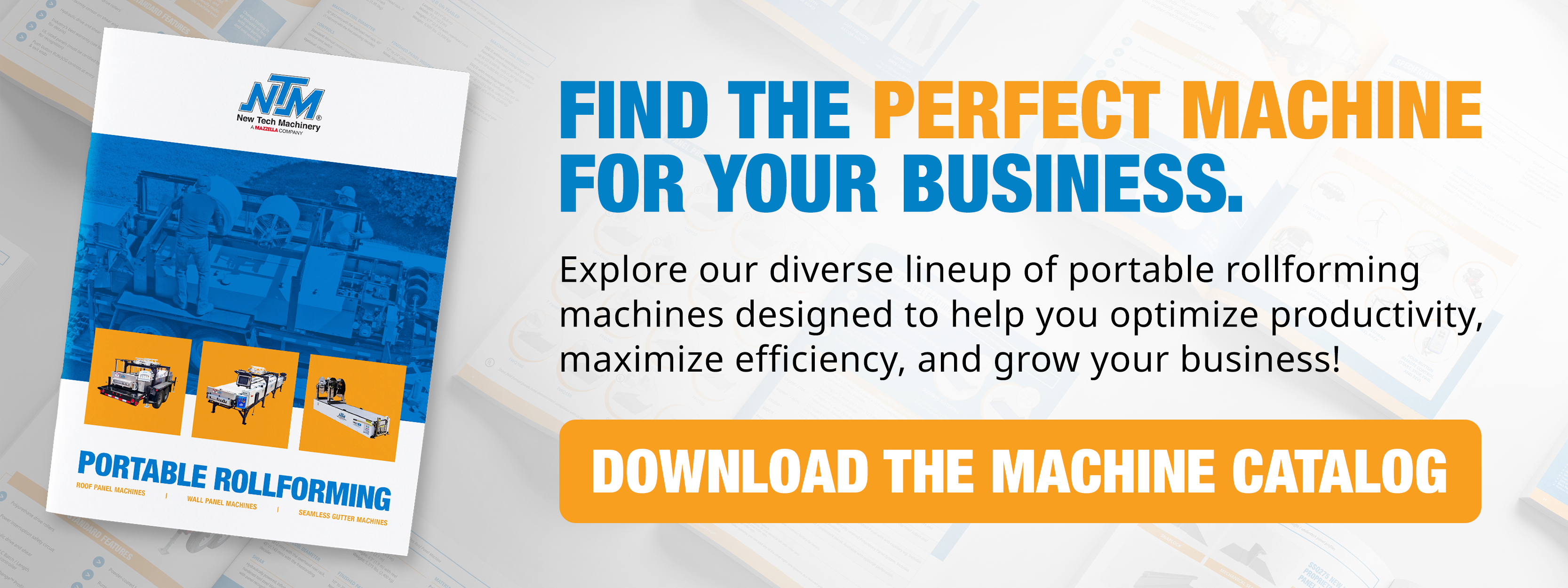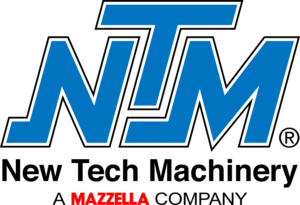While both the Schlebach Quadro Cinco and the New Tech Machinery (NTM) MultiPro Roof and Wall Panel Machine rollformers fabricate similar roofing panels, in certain aspects the two machines operate differently. Schlebach and NTM designs contrast in ways not seen in other brand machines. We wanted to look at how the SSQ II MultiPro compared to a rollformer that wasn’t just another copy but was unique in itself.
When choosing a machine for comparison to the SSQ II MultiPro, the Schlebach Quadro Cinco stood out because it was amongst the highest-quality machines on the market. Preference, however, is left to the consumer. This article is not intended to favor one over the other, but simply to compare the Quandro Cinco to the SSQ II MultiPro. Both machine manufacturers have earned outstanding reputations in the industry and continue to produce robust, state-of-the-art rollformers.
The Schlebach Company (Schlebach Maschinen GmbH), based in Germany, first released its QUADRO profiling machine in 1997. They have distribution partners worldwide, including Metalforming II Inc. in the U.S. Along with rollformers, Schlebach manufacturers folding/ seaming, bending, and specialized equipment.
New Tech Machinery, based in Aurora, Colorado, built its first roof panel machine in 1991. NTM was the first company to commercially produce and market a polyurethane drive roller machine with separate forming rollers, which has now become the standard among most rollforming machine manufacturers. Along with its SSQ II, SSR, SSH and 5VC-5V Roof Panel Machine, NTM manufactures the Mach II 5”, 6”, and 5”/6” Combo Gutter Machines.
In this article, we will deep dive into the following aspects of Schlebach’s Quadro Cinco and NTM’s SSQ II MultiPro:
- Drive Systems
- Profiles
- Shear-cutting
- Auto-notching option
- Controllers
- Specs and Costs
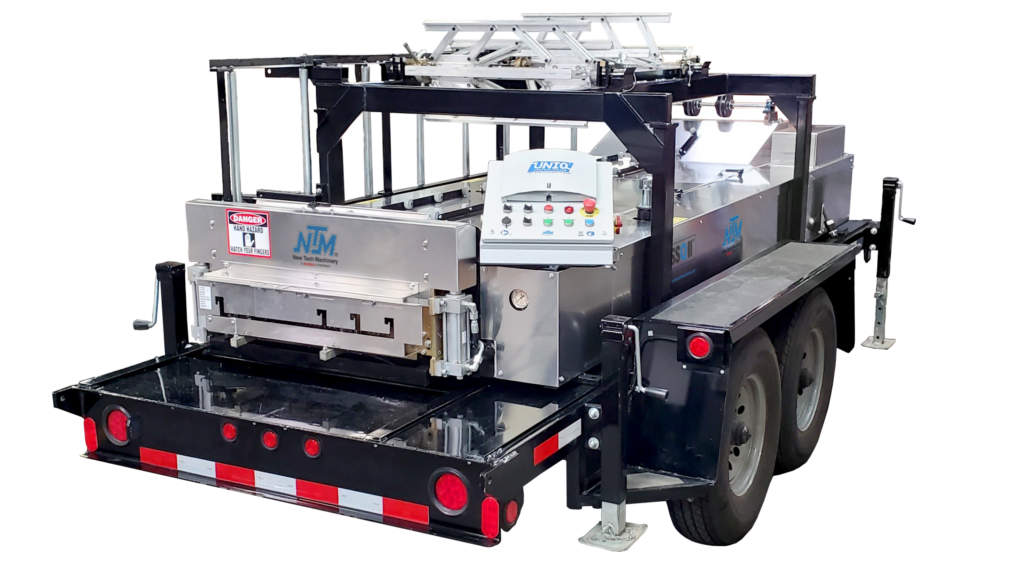
Quadro Cinco & SSQ II MultiPro Drive Systems
The Schlebach Quadro operates a unique hybrid drive system with dual drivelines, one on each side. The Quadro system was designed to eliminate oil canning, with the idea that the dual drive system would create less stress on the coil. The other aspect of this system worth noting is that it allows you to make tapered, double female and double male panels in two passes. Because of its design, it can produce narrower panels than would be standard in most cases.
The NTM SSQ II MultiPro has a single, center polyurethane drive system. The polyurethane drive system is designed to put less pressure on the coil as it moves it through the machine, as the single-drive system doesn’t pinch the edges of the coil.
It’s probably fair to say that any oil canning caused by a machine can be corrected by adjusting the forming rollers, and it’s a non-issue with either style of drive system.
Quadro Cinco & SSQ II MultiPro Profiles
The Schlebach Quadro Cinco uses cassette profiles changeable with a forklift. The cassette allows a quicker changeover, although a forklift isn’t always available if you’re in the field. However, most cassettes have rollers mounted on each side, so you just need to flip it over and make a few minor adjustments to run a new profile. If you’re doing frequent changeovers between two profiles, this is definitely an advantage. The Quadro runs both roof and wall panel profiles.

The NTM SSQ II MultiPro offers 16 profiles that a single person can change in less than an hour. No need for a forklift, so while it may take a bit more time for the changeover than with the Schlebach Quadro, it’s more convenient out in the field. The SSQ II also runs both roof and wall panel profiles.

Shear Cutting Functions
The Quadro Cinco is unique in that the shear cuts from the entry point. In contrast, the SSQ II MultiPro shear cuts from the exit point. There are advantages and disadvantages to both.
Advantages to pre-cut include creating a clean cut and allowing the user to hand-feed for low-volume production. Also, pre-cut shears require less maintenance. No die changes need to be made for varying profiles because cutting is done prior to rollforming.
However, some panels run better on post-cut, like high-strength and heavy gauge steels. Also, shorter panels can’t be run with pre-cut shears, whereas post-cut can handle as short as 3″ or 4″ panels.
The main disadvantage to post-cut is the high maintenance. The shear, as mentioned, needs constant lubrication. Then there’s the expense and maintenance of cut-off dies.
Ultimately, most panels can be produced using either shear. Though the post-cut end may look a bit rougher, it’s worth noting that this edge gets tucked under, so it’s debatable whether it makes much difference. While the pre-cut may be more cost-effective and provide a cleaner cut, it isn’t ideal for every situation. Many contractors prefer the post-cut for this reason.
One feature on the shear end of the SSQ II is the proximity sensor. The proximity sensor pauses machine operation if a panel hasn’t been removed once it moves past the shear. That way, the panel doesn’t get damaged or scratched by being pushed out, as the machine will run at the pace of the operator. Once the panel’s been removed, the machine will resume the sequence. The SSQ II is the only machine on the market with this feature.
Quadro vs. SSQ II Auto-notching
Both the Quadro Cinco and the SSQ II MultiPro offer auto-notching as an option. Both work using hydraulic systems to notch the panels. Also, both can produce offset notching on panels and can combine with angle cutters, offered by each company as additional options.
The difference here is that with the Quadro Cinco, the notcher is a separate unit that attaches to the machine. In the SSQ II, the notching system is built into the machine. The SSQ II has an advantage, especially in terms of transportability, as you don’t have another piece of equipment needing to be attached as an accessory and moved separately. It’s all-in-one machine.
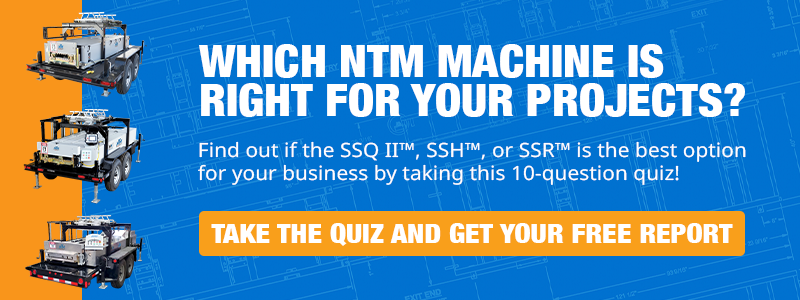
CINCO vs. UNIQ™ Controller
Both machines offer advanced controllers and software.
The Quadro Cinco uses the CINCO (Computer Integrated Notching Cutting Operation) Controller. The CINCO Controller features TopView™ 3D roof design software that enables the contractor to enter the dimensions of a building and make any necessary adjustments on-screen using three-dimensional imagery. The standing seam panel dimensions are calculated and once you’re sure of their accuracy, you can download them onto a USB drive. The information goes into the CINCO Controller, and all the panel lengths are uploaded without any manual entry of data. Everything can be verified on-site before running the panels. With the notching unit, panels are run automatically and ready for installation.
NTM’s SSQ II MultiPro offers the UNIQ Automatic Control System as an added option. The UNIQ controller also has a USB port and the ability to upload or download a cutlist. It features a coil calculator for estimating the amount of material you have, job and entry functions, and machine settings. You can program notching, including angled notching for hips/ valleys, etc. The USB port makes program updates easy and allows you to import a 600-panel length cut list and export final project specifications. The UNIQ Controller allows you to tell the SSQ II the exact length and quantity of the panels, and controls the machine’s drive and shear.
Quadro Cinco vs. SSQ II MultiPro Specifications & Pricing
Schlebach’s Quadro Cinco


NTM’s SSQ II MultiPro



Training Costs
Training is required for the Quadro Cinco on-site or in-house by a MetalForming technician to validate the machine warranty. On-site training is $165 per hour plus travel expenses and incidentals. In-house training is available to customers willing to travel to Peachtree, Georgia for $165 per hour.
New Tech Machinery does not require training to validate the machine warranty, but training is highly recommended, especially for the SSQ II with notching. On-site training is $500 per day, plus trainer travel expenses and incidentals. In-house training is available to customers at the main plant in Aurora, Colorado, free of charge for new machine owners.
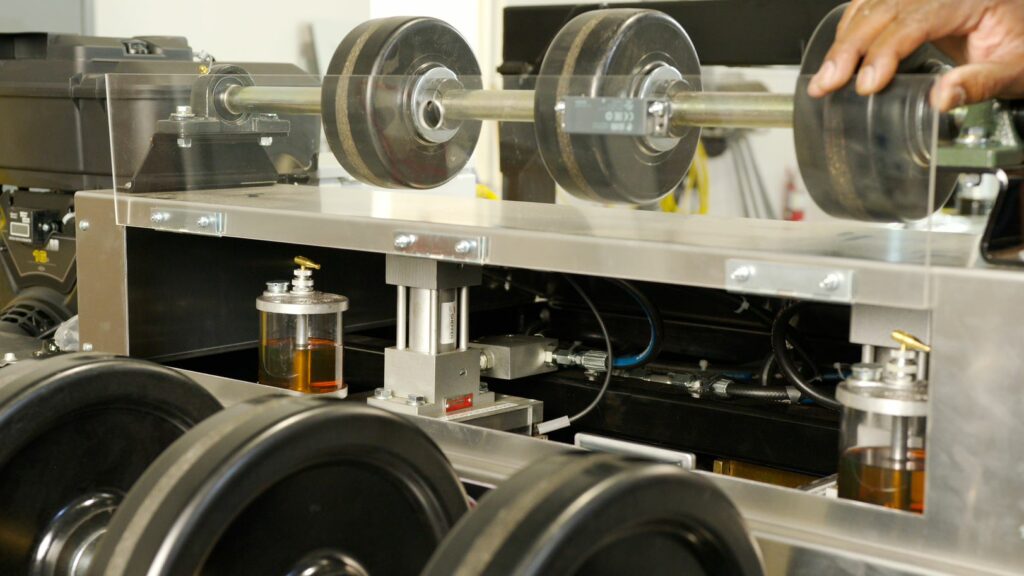
Final Thoughts on Quadro Cinco vs. SSQ II MultiPro
As stated at the beginning of the article, both the Quadro Cinco and SSQ II represent the finest in portable rollformers. User preference may be the ultimate determining factor. The Quadro Cinco’s quick-change cassettes make profile changeovers fast and enable flipping between two profiles very easy. SSQ II’s adjustable profiles also offer multiple options, including NTM’s new board & batten profile.
The prices are similar, as while the Quadro Cinco includes the high-end controller, for the SSQ it is an added option. However, the Quadro does not include a cassette profile, while the SSQ II includes your choice of forming rollers at no extra cost. Also, MetalForming charges a per-hour fee for in-house training, while NTM in-house training is free for new machine owners. Both charge for on-site training, although on-site training is free with certain SSQ II notching packages.
For information on the SSQ II MultiPro Roof and Wall Panel Machine, or any of our machines or accessories, feel free to contact us. One of our account managers will be happy to answer any questions you may have.
